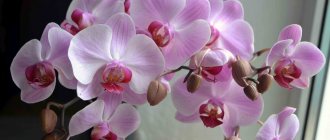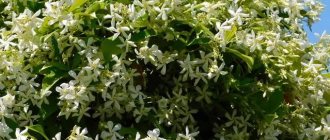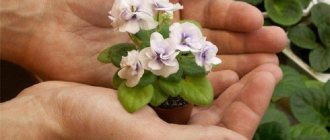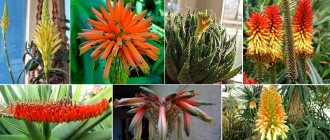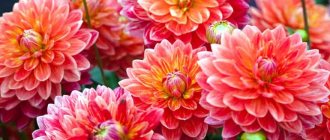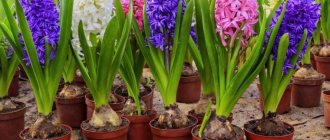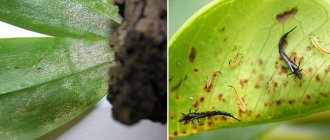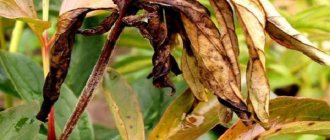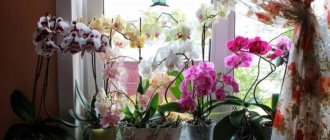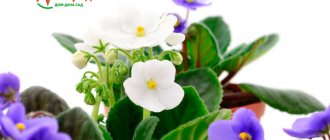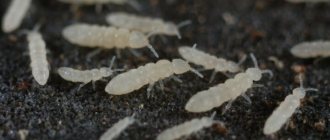Our children are especially vulnerable when encountering poisonous plants. How can an inexperienced child resist the sight of flowers or berries? Therefore, when walking with your child in the park or outside the city, teach him under no circumstances to put picked flowers and leaves in his mouth - this can lead to serious poisoning. And some plants should not even be touched. And with older children you can study these pictures together:
An umbrella plant, similar in appearance to overgrown dill. Once upon a time it was actively planted in central Russia as a fodder grass, and therefore it is widespread everywhere. Hogweed stings like nettles, but does not fully manifest itself right away. The essential oils contained in the plant cause a serious chemical burn when interacting with ultraviolet radiation when the sun's rays hit the burned area of the skin. If a child touches hogweed, immediately wash the area with cool water and soap. Wipe with a cotton swab dipped in a weak solution of potassium permanganate and lubricate with wound-healing cream. And be sure to protect the affected skin from the sun for at least two days.
A plant with a tall stem and small white flowers collected in an umbrella. Hemlock can be seen in vacant lots, roadsides, and as a weed it can also be found in summer cottages. Hemlock leaves look like parsley with reddish specks, and a child may well mistake it for this fragrant herb. Outwardly harmless, this plant is extremely dangerous: all its parts are poisonous. Hemlock poisoning can manifest itself in a child with nausea, vomiting, dizziness, chills, and blurred vision. However, in small doses, hemlock has long been used medicinally in the form of tinctures and ointments; Nowadays, hemlock preparations are prohibited by official medicine.
Small trees with bright red berries can be seen in forests near Moscow, along roadsides, and sometimes in parks and summer cottages as an ornamental plant. The glossy clusters against the background of dark green leaves really look very beautiful, and the berries literally beg to be eaten. But you shouldn’t taste them: the hydrocyanic acid derivatives in their composition can lead to poisoning with vomiting, diarrhea, and abdominal pain. Fortunately, these fruits are not considered deadly; Moreover, after drying or heat treatment, the harmful substances in them are destroyed. That is why red elderberry is included in some traditional medicine recipes, and its relative, black elderberry, is widely used in herbal medicine and cooking.
This herbaceous plant with narrow leaves and white umbrellas of inflorescences can be found along the banks of rivers, ponds and ditches - it loves moisture. Its leaves emit a smell similar to celery, and its rhizomes taste like edible root vegetables like rutabaga or radish. Meanwhile, veh is one of the most poisonous plants. This is the same hemlock with which, according to legend, Socrates was poisoned. Just 50g of its rhizome is enough to kill a 50kg animal, such as a sheep. Within a few minutes after the cicutotoxin contained in this plant enters the body, nausea, vomiting, dizziness, and convulsions may appear. To neutralize the effect of the poison, immediate gastric lavage with a special antidote will be required. Another name for the poisonous weed is water hemlock.
Thin bushes with rare red berries decorate forested areas both in the Moscow region and throughout central Russia. They seem very appetizing in appearance, although they can lead to severe poisoning with a burning sensation in the mouth and esophagus, vomiting, dizziness, and convulsions. Moreover, not only the berries are dangerous: the juice from the wolfberry stem, if it gets on the skin, can cause inflammation. And by inhaling the aroma of the bark or stems, it is easy to get irritation of the respiratory tract with a sore throat, cough and runny nose. So if your child managed to pick this plant, first wash his hands with soap as soon as possible.
Is this the same thing or not?
The upper aerial parts of these fragrant herbs are very similar in appearance. Both types of herbaceous plants belong to the same Apiaceae family and are used in cooking and folk medicine, but they are not the same plant.
Plant similarities
For medicinal purposes, the seeds of dill (Voloshsky) are used; this plant is also called common fennel. The fruits of these medicinal herbs contain essential oils and protein. The aroma of fennel seeds contains subtle notes of anise, unlike its green counterpart.
- Preparations made from fennel and dill seeds are used as a mild expectorant for bronchitis, pneumonia and whooping cough; improve the functioning of the digestive system.
- These herbs are successfully used for treatment in the form of tinctures and decoctions for flatulence and unstable intestinal function in infants.
Why are they confused?
It is possible to confuse plants using only external signs during planting seeds and at a young age ; both species grow well in vegetable gardens and garden plots and upon visual inspection they exhibit similar elements:
- Two types of spices are united by one family - Umbelliferae.
- Their feathery green leaves and numerous inflorescences collected in umbrellas look almost the same.
- Mature stems of both species reach a height of 1-2 m.
- Greens are widely used in cooking in the preparation of meat, fish and vegetable dishes.
Read about planting fennel seeds here.
Dill water, which is sold in pharmacies, is prepared using fennel seeds to normalize intestinal function in children.
Otherwise, these herbs have many differences: the crops have different chemical compositions, so their effect on human organs occurs differently .
How are they different in appearance?
With a closer look at the plants, you can easily notice significant differences:
- The central stem of dill is hollow inside and does not exceed 1.2 m in height. While fennel quickly grows to a height of 2 meters and bushes heavily at the base (dill has a bare stem dotted with individual leaves).
- Fennel is a biennial plant, and dill is an annual plant.
- Clear differences are noticeable when comparing seeds: dill has small, flat seeds, while fennel fruits reach sizes up to 10 mm in length.
- They have completely different aroma and taste properties: dill has a specific taste, unlike other herbs; The taste of fennel is sweet with a slight bitterness. The smell leaves no doubt that these are different plants: dill is a fragrant garden herb, and fennel has an exotic aroma of anise and mint with a hint of tarragon.
When grown in the garden, fennel requires more attention and care than dill.
Despite their superficial similarity, dill and fennel are not the same plants. Two different plants, fennel and dill, have different chemical compositions and have different effects on the body.
Fennel
This spicy herb also has another name - wild dill, sometimes called sweet dill. But fennel is a separate crop from the vegetable umbrella, represented by two varieties.
Note! It is the wild variety (also called pharmaceutical dill) that is most similar to real dill. The vegetable variety is distinguished by a thickened base, popularly called a head.
What does the plant look like?
Fennel has a fairly powerful, branched, waxed, tall (up to 2 m) cylindrical stem with a bluish tinge. Stem leaves, like those of dill, are pinnately dissected into linear narrow lobes. The lower leaves are petiolate; in vegetable fennel, they emerge from the head.
Yellow five-petal flowers are collected in umbrellas, which are located at the tops of the stems. Fennel, like dill, is characterized by bisexuality. The plant blooms from July to September. The two-seeded fruit is similar to dill.
Value
Both varieties of herbs are used for food. Vegetable heads of cabbage are used in salads and for preparing first and second courses. They are also valued as a dietary product. Ordinary fennel is used as a spice instead of dill.
Each type is valuable for its therapeutic effect:
- spicy vegetable heads are recommended for kidney and liver diseases;
- they will also help with eye problems;
- in folk medicine, fennel seeds are included in recipes for hypertension and for the treatment of hypochromic anemia;
- advised to a nursing mother to enhance lactation and in cases where the newborn suffers from colic;
- sweet dill is included in herbal preparations that have carminative and choleretic effects;
- the decoction enhances the secretory function of the digestive glands;
- the seeds have a calming effect on the nervous system.
Photo
In the photo below you can see what dill looks like:
And this is fennel:
Benefit
The benefit of plants is that they are accepted by official medicine as medicinal herbs and are widely used to treat many diseases.
Fennel
Fennel fruits are mainly used for medicinal purposes.:
- Due to the high concentration of essential oils (up to 6%), its seeds are used in the perfume industry, in the production of mouth fresheners and in toothpastes.
- The amino acid helps in the treatment of anemia, since iron is an integral part of the hemoglobin molecule in the blood.
- For various disorders of the digestive system: bloating, diarrhea, constipation.
- You can combat bad breath by chewing fennel seeds.
- The use of medicinal herbs is useful for menstrual irregularities in women.
- Diuretic properties help remove toxins from the body.
We invite you to watch a video about the beneficial properties of fennel:
Read about the benefits and harms of fennel here.
Dill
Dill has been known to mankind since ancient times. In Ancient Rome, fragrant branches were inserted into wedding bouquets for girls. These days, dill is known as a popular gastronomic seasoning and a powerful source of vitamins. Dill seeds contain microelements :
- potassium;
- calcium;
- manganese;
- copper;
- zinc.
The calcium content in dill significantly exceeds its amount in peas and beans. Green leaves contain a lot of phosphorus and iron, which makes this plant beneficial for digestion and the cardiovascular system.
The special aroma of dill is given by the essential oil component D-carvone, which prevents the occurrence and slows down the development of cancer cells.
We invite you to watch a video about the benefits of dill:
What is more healing?
Dill and fennel, each in its own way, bring many benefits to the human body. It is difficult to say unequivocally which medicinal herb is healthier . Both plants must be included in the diet.
Dill
This spice is a “classic” of garden beds and has been used by mankind since ancient times. It’s hard to imagine both a summer cottage and a dining table without dill. This plant is more popular than fennel, but is in many ways similar to it.
Description
Externally, dill is very similar to its wildly growing “brother”. The same tall, branched, erect stem with longitudinal ribbed stripes and a waxy coating. At first glance, the leaves are also similar - sessile or petiolate, divided into lobules. If you don’t look too closely at the flowers, they are also identical – small, five-parted, forming umbrellas. It is difficult to distinguish between each other and the seeds are greyish-brown in color.
Dill in the garden
Beneficial features
Basically, garden seasoning is used as a spice for pickling, preserving and pickling vegetables. Essential aroma and taste improve the quality of salads and hot dishes. But dill is valued no less than fennel for its healing properties - they have an almost identical beneficial composition.
Among the essential oils of dill, carvone should be highlighted. Fatty oils are represented by glycerides of linoleic, oleic, petroselinic, and palmitic acids. The spicy culture is attracted by its rich vitamin and mineral set.
The fruits are used to make dill water for babies; it helps improve intestinal motility. Decoctions and infusions have a calming and antispasmodic effect, expectorant and vasodilator, diuretic and choleretic.
For colic in the tummy
Dyspepsia in children is treated with dill decoctions. The composition of dill waters is useful for cystitis in adults, relieves flatulence and abdominal pain. Every property inherent in fennel can be attributed to garden dill.
Harm and contraindications
Any healthy product must be consumed in reasonable quantities.
At fennel
With excessive consumption of this culture, the components included in the essential oils can cause:
- neurotic changes;
- rapid breathing is observed;
- heartbeat increases.
It is necessary to take the herb for medicinal purposes in small doses , gradually increasing them. If you experience negative changes in your health: nausea, dizziness or diarrhea, you should immediately stop using the medicine and seek advice from your doctor.
At dill
It is not recommended to consume dill in large quantities if you have nervous system disorders. The components included in its composition can cause addiction to the body, which leads to the need to increase the dose of their consumption:
For example, carotene affects visual acuity; with uncontrolled consumption of spicy greens, the body begins to need a constant increase in the dose of carotene, otherwise visual acuity will begin to decrease.- Dill has diuretic properties, so people with kidney disease should use this green with caution; especially if other diuretics are taken - this can lead to dehydration.
- The herb stimulates the functioning of the stomach and intestines; as a result of addiction without the use of a green stimulant, malfunctions in the digestive system may occur.
Fennel and dill in folk medicine
Until the 19th century, strong decoctions of umbrella plants were used as an abortifacient for unwanted pregnancy. Essential oils, when taken orally in large quantities, caused expulsion of the placenta and severe uterine bleeding; women often died after such treatment methods by village doctors and midwives.
After studying the properties and chemical composition of essential oils of umbrella plants, their toxicity and maximum permissible doses were established.
Attention! Before using traditional medicine, consult your doctor.
Dill infusion has a diuretic effect. It is used to relieve swelling in hypertension. An infusion of seeds is used as a carminative for flatulence, as well as a sedative and sedative for insomnia. A solution of essential oil in apricot or peach oils is used externally to relieve itchy skin.
Fennel has a long history of medicinal use. Hippocrates used it as a diuretic, Dioscorides as an ophthalmic remedy, and Avicenna as an expectorant.
What does fennel treat? — Home healer — issue No. 215
Dry seeds are included in laxative, carminative, thoracic, choleretic and sedative preparations. Essential oil is diluted with water (1 drop per 1 liter of water) to obtain dill water for the treatment of flatulence in children. An infusion of leaves and fruits is used as a sedative and antispasmodic. A tincture of seeds is used externally to treat acne and furunculosis.
Fresh fennel leaves and fruits are used to freshen breath. An infusion of a mixture of dry seeds of umbrella plants and mint leaves is used to rinse the mouth for toothaches.
What is the difference between what is common and which spice is healthier?
The differences between these aromatic herbs are determined by their chemical composition, medical indications for use, and they smell differently. Due to differences in composition, plants have different effects on organs . Fennel's crunchy, aromatic rhizome is eaten, but dill's roots are not suitable for anything.
Dill and fennel are united by the use of both herbs in cooking and the young plants are very similar in appearance.
By all indicators, fennel contains more medicinal and nutrients than dill. Therefore, you can easily replace dill with fennel, both in medicine and in cooking (the taste and smell of the dish will only improve), but fennel cannot be replaced with dill: the replacement will not bring the desired result. If you have the opportunity to choose, then fennel will be much healthier than dill.
What is the difference between dill and fennel?
The two spice cultures are very similar. But in order to fully understand the question: is fennel a type of dill or not, it is worth considering the differences between them (and they exist).
Differences between cultures
| Fennel | Dill |
| Develops as a perennial plant, can grow in one place for up to 4 years | herbaceous annual |
| Fennel grows larger in height than dill | |
| The leaf lobes are wider than those of true dill and coarser | Graceful leaves are dissected into narrow, almost needle-like lobes |
| Umbrellas are formed mainly at the tops of stems | Umbrella inflorescences are also present on the branches |
| The strong smell is closer to anise than dill. | Native rich spicy aroma |
| Larger fruit | The seed is smaller than fennel |
| Essential oils in seeds not less than 6% | Less pronounced fruit aroma due to lower ester content - up to 4% |
| Presence of edible heads at the base of the vegetable fennel | The stem does not have characteristic thickenings |
| Powerful, spindle-shaped root, up to 2 cm thick | The rod is thin and poorly developed |
| There are minor differences in chemical composition |
Crops and agricultural technology differ. In many ways, the growing conditions are identical, but a number of differences can be identified.
Is it possible to replace one plant with another?
One important feature should be noted: in all respects, fennel contains more medicinal and nutrients than dill.
Therefore, you can easily replace dill with fennel, both in medicine and in cooking (the taste and smell of the dish will only improve).
Fennel cannot be replaced with dill; scientists have noted that the replacement will not bring the desired result. If you have the opportunity to choose, then fennel will be much healthier than dill.
How will the taste of the dish change?
These plants have different tastes and aroma. Fennel has a minty-anise flavor with a slight bitterness. Dill has a rich aroma and sweet-spicy notes.
Differences between fennel and dill
In addition to external signs, these plants have their own characteristics in cultivation and use, as they have different properties.
Features of growing fennel and dill are given in the table.
| Features of growing and harvesting | Common fennel | Dill fragrant |
| Landing method | Seedling and seed | Seminal |
| Soil moisture | High | High |
| Soil pH | Neutral | Neutral and alkaline |
| Neighbors in the garden beds | Single plant, it is not recommended to plant other plants | Gets along well with other crops |
| Frost resistance | Low, in central Russia fennel dies with the onset of cold weather | High, dill seeds can successfully overwinter in the soil and germinate in the spring |
| Light mode | Light-loving plant, may die in the shade | Light-loving plant, but can grow in the shade |
| Harvesting leaves | July August | June July |
| Harvesting seeds | September | July – September |
Properties and features of the use of fennel and dill
The difference in the properties of these umbrella plants is due to the different chemical composition of the shoots and seeds.
Fragrant dill shoots contain:
- vitamin C;
- vitamin PP;
- carotene;
- vitamins B1 and B2;
- flavonoids;
- pectins;
- carbohydrates;
- essential oil;
- mineral salts.
Composition of dill fruits and seeds:
- fatty oil (15-18%);
- proteins (14-15%);
- carbohydrates;
- essential oil (2.5-8%).
The composition of the essential oil of shoots and seeds is different, which accounts for the difference in smell. Therefore, the leaves are used in cooking, and the seeds are used in medicine as a stimulant for the digestive glands, and also as a culinary seasoning for bread.
Fennel leaves and stems contain:
- vitamins B1, B2, B6;
- vitamin C;
- vitamin PP;
- vitamin A;
- mineral salts;
- carbohydrates;
- proteins;
- flavonoids;
- essential oils.
Composition of fennel seeds and fruits:
- vitamin A;
- vitamin E;
- vitamin C;
- vitamin K;
- vitamin PP;
- vitamin H;
- vitamins B1, B2, B6;
- essential oil (2-6%);
- fats (9-12%);
- carbohydrates.
Due to its specific smell, fennel essential oil is used in perfumery. Fatty fennel oil is used as a lubricant in technology. The leaves, fleshy stems and fruits are used in cooking. Medicines for the treatment of diseases of the respiratory, digestive, nervous and cardiovascular systems are obtained from the seeds.
Is it possible to mix?
Dill and fennel go well together . When canning, the mixture of flavors will add flavor to the vegetables. The taste of a fresh vegetable salad will only benefit from adding both herbs. To enhance lactation, doctors recommend taking infusions from various herbs for nursing mothers.
If you are taking a medicinal mixture to increase your breast milk supply, the benefits of fennel seed and dill mixture will increase.
Dill and fennel are sources of vitamins and microelements necessary for humans. If these plants are consumed correctly, they will not cause any harm to the body.
